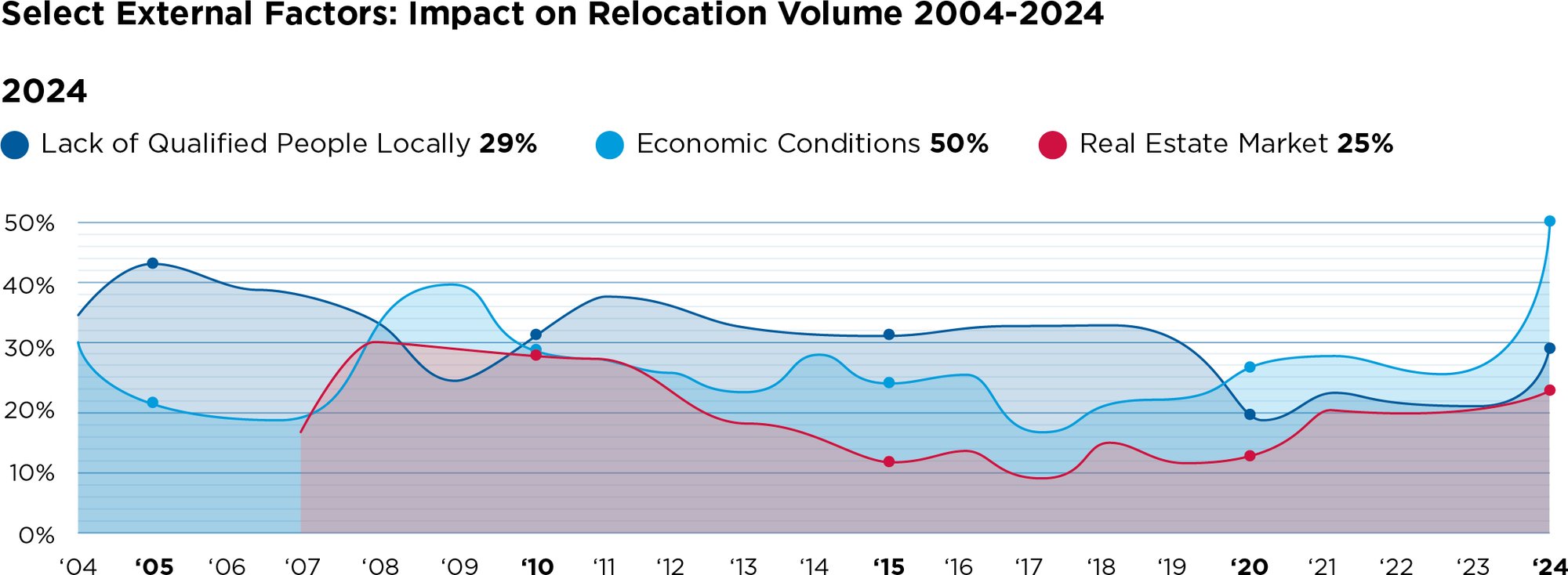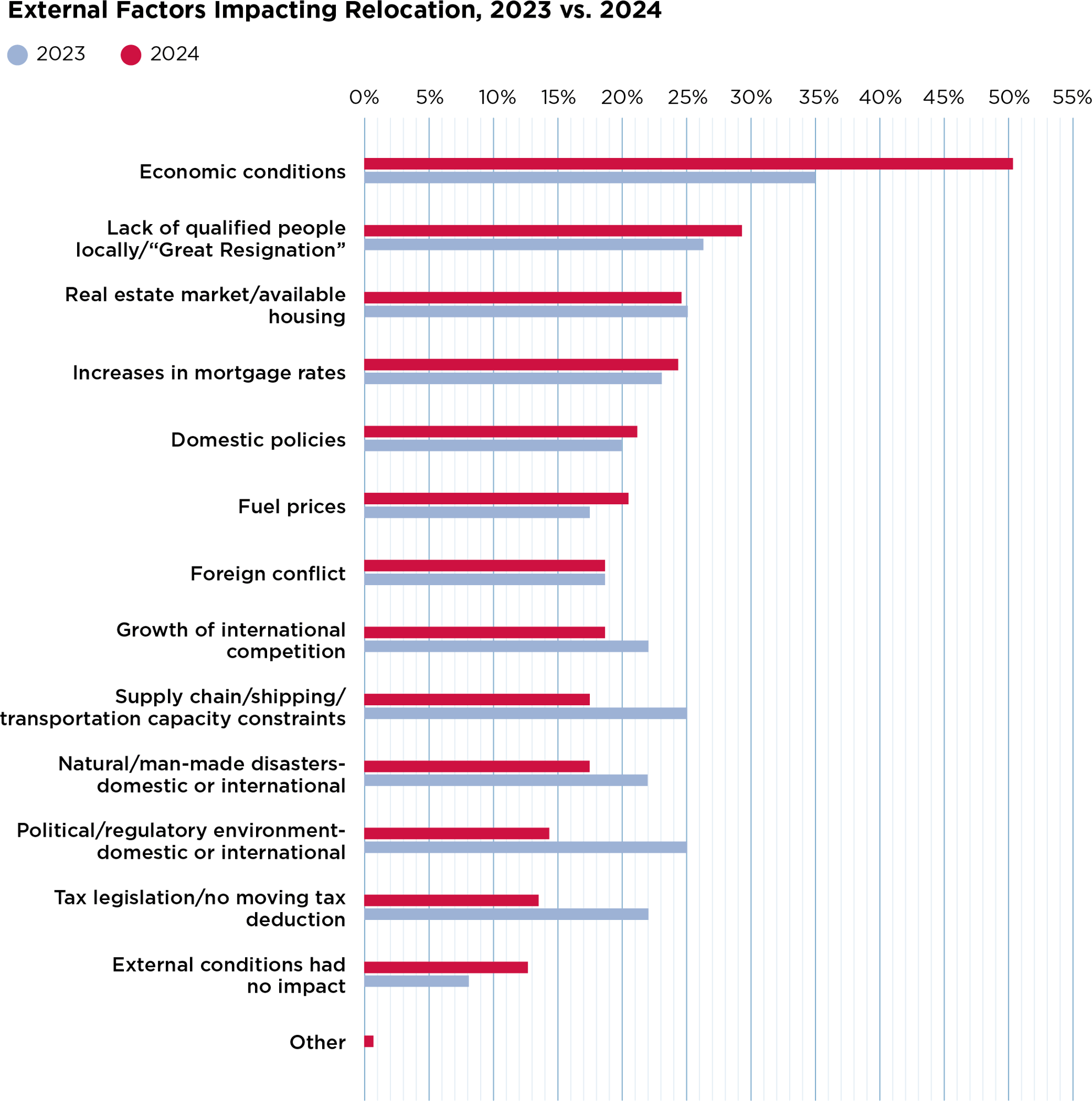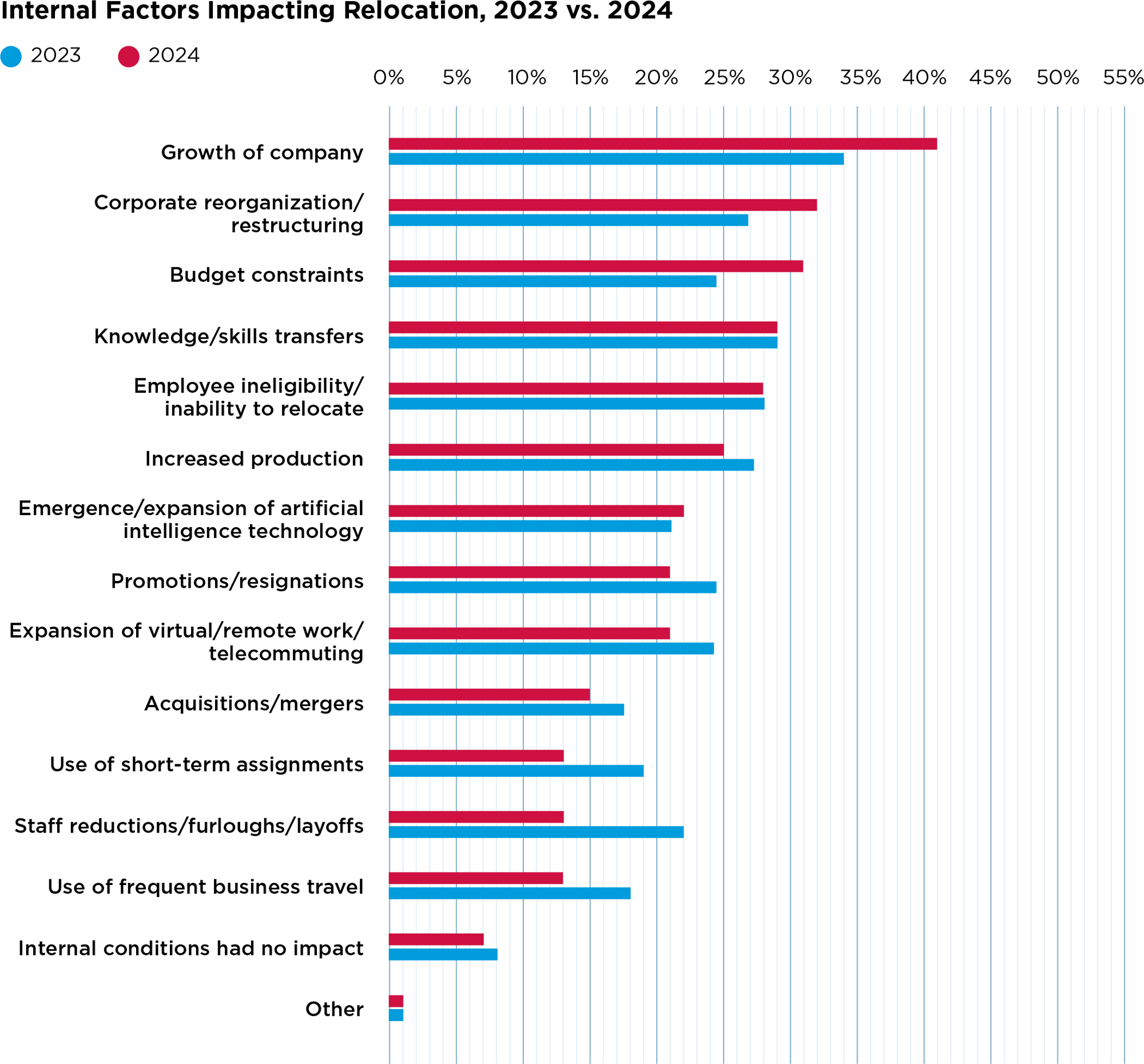- Resources
- Corporate Relocation Survey
- FACTORS IMPACTING RELOCATION
Corporate Relocation Survey 2025
FACTORS IMPACTING RELOCATION
EXTERNAL FACTORS IMPACTING CORPORATE RELOCATION
In 2024, the top four external factors that impacted employee relocation were:
- Economic conditions (50%)
- Lack of qualified people locally (29%)
- Real estate market/available housing (25%)
- Increases in mortgage rates (24%)
Even with companies’ improved financials and confidence in the global economy, half responded that economic conditions had the most significant impact on the number of employee relocations in 2024 with a 15% increase over 2023.
Lack of qualified people locally as a factor impacting corporate relocation remained fairly steady year over year, increasing slightly from 27% in 2023 to 29% in 2024. The job market was tight last year, but companies sought ways to grow their workforce and boost productivity. Meanwhile, employees wanted change. Many sought employment with better work-life balance, wages, and culture.
Increases in mortgage rates became a new external factor impacting corporate relocation in 2024. This happened at a time when mortgage rates in the U.S. rose as high as 7.3%. Simultaneously, home prices climbed and home sales fell, which created a lot of uncertainty amongst homeowners relocating for work.


INTERNAL FACTORS IMPACTING CORPORATE RELOCATION
In 2024, the top four internal factors that impacted corporate relocation were:
- Growth of company (41%)
- Corporate reorganization/restructuring (32%)
- Budget constraints (31%)
- Knowledge/skills transfer (29%)
Company growth remained the top factor year over year and even increased by eight points. From a labor perspective, U.S. jobs did rise in 2024, but at a slightly lower rate than 2023. Company growth may have in part been driven by corporate reorganization and restructuring as companies adapt to meet market demands.
Budget constraints broke into the top four internal factors impacting corporate relocation with a seven point increase over 2023. During high global skilled labor shortages, offering competitive relocation benefits was essential. Budget constraints could make it harder to attract and retain top talent if relocation incentives were insufficient.
The impact knowledge/skills transfers had on relocation remained steady from 2023 to 2024, indicating that this could become standard practice to ease the talent acquisition hurdles of today’s job market.
